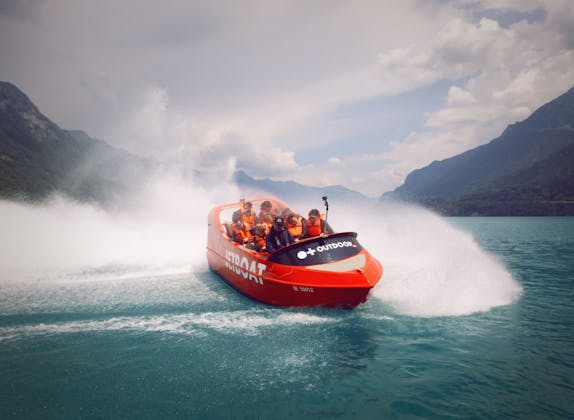
Jetboat Interlaken Lake Brienz from Bönigen
Duration: 1 hour
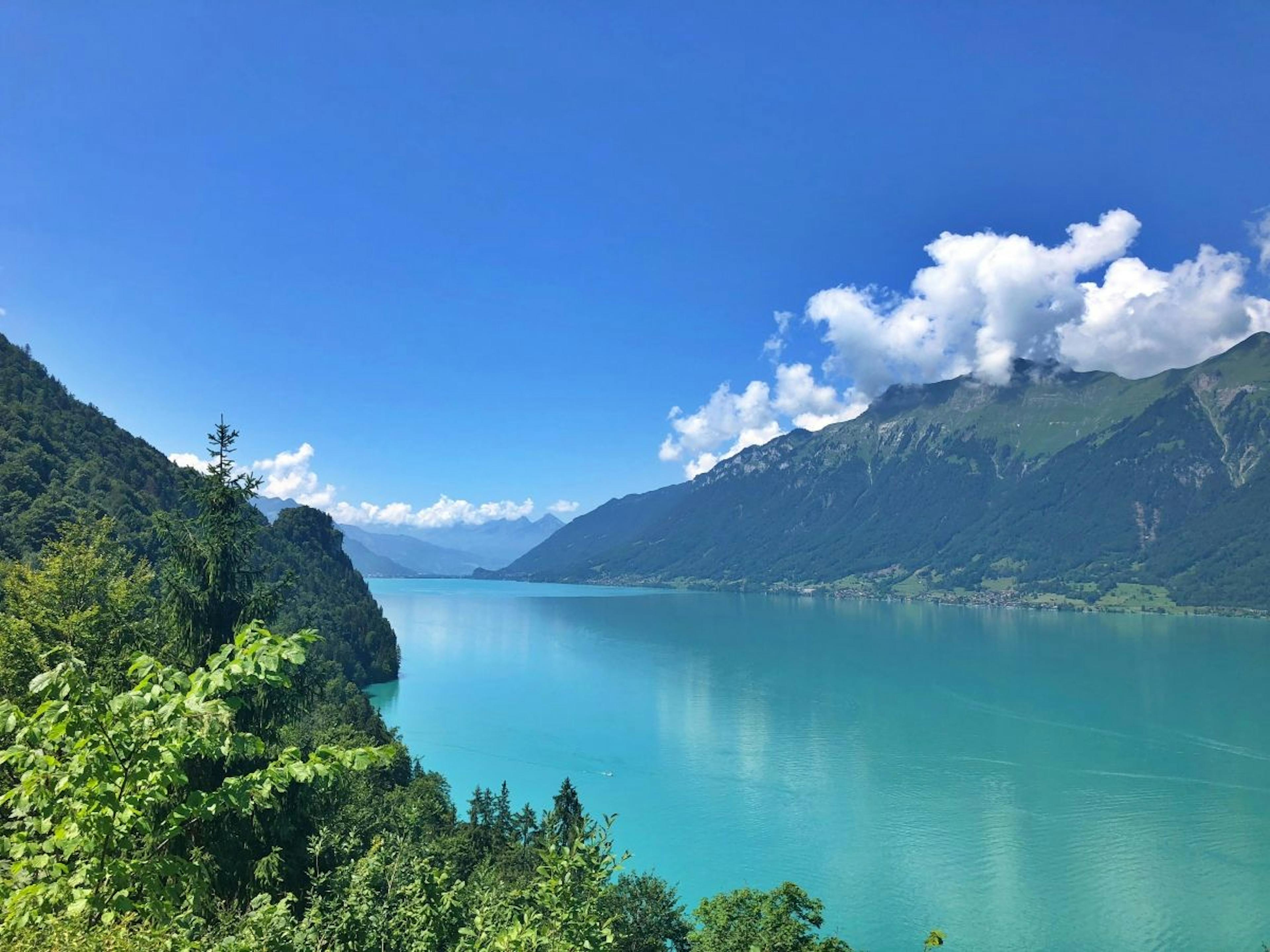
There are over 1500 lakes in Switzerland, which makes the country an absolute paradise for water lovers. It is not for nothing that it bears the nickname "Water Castle of Europe". We have summarized the 13 largest Swiss lakes in this article.
Switzerland is nicknamed the "Water Castle of Europe" for a reason. Even a quick glance at the satellite image gives you an idea of how much water there's lying, flowing, circulating, melting, freezing and splashing around in this country.
In total, there are over 1500 Swiss lakes. This means that, statistically speaking, you're never more than 16 km away from the nearest lake. No matter where you are in the country.
Switzerland is home to about 6% of Europe's freshwater reserves. This may seem like a modest number at first glance. But when you consider that Switzerland makes up just 0.4% of Europe's land mass, that 6% suddenly takes on a whole new perspective.
Of course, Switzerland also struggles with water shortages, especially during hot and dry summer periods. And due to the glaciers melting, important water reservoirs are subject to a continuous shrinking process. But generally speaking, Switzerland is in a very comfortable position in terms of water supply.
Of course, we can't list all 1500 Swiss lakes here. Therefore, we get into the 13 largest Swiss lakes to give you an overview.
Lake Geneva is the largest lake in Switzerland. However, that’s only half the story, as 60% of the lake is on the Swiss side and 40% on the French side. The lake's total area is 580 km², making it the largest and most water-rich inland lake in Europe.
The climate in the Lake Geneva region is very mild, providing ideal conditions for wine growing. North of the lake, vineyards stretch as far as the eye can see, with the terraces of Lavaux being part of UNESCO World Heritage.
You can take a boat to visit numerous towns and villages along the shore. Starting with the Jet d’Eau in Geneva, a 140 m high fountain in the lake, and ending at the Chillon Castle, a medieval fortress near Montreux. These towns are also connected by cycling and hiking paths, making Lake Geneva a perfect travel destination.
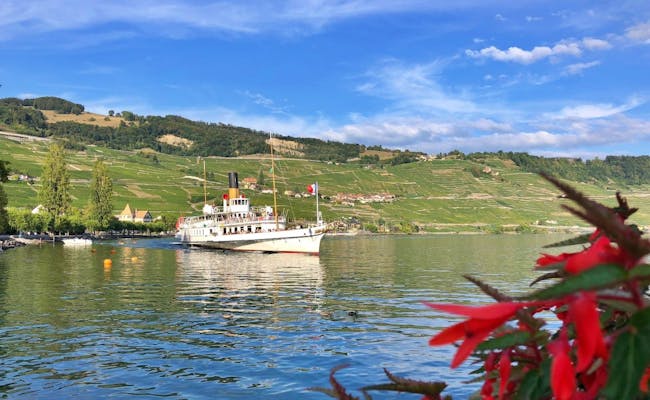 Steamship on Lake Geneva (Photo: Seraina Zellweger)
Steamship on Lake Geneva (Photo: Seraina Zellweger)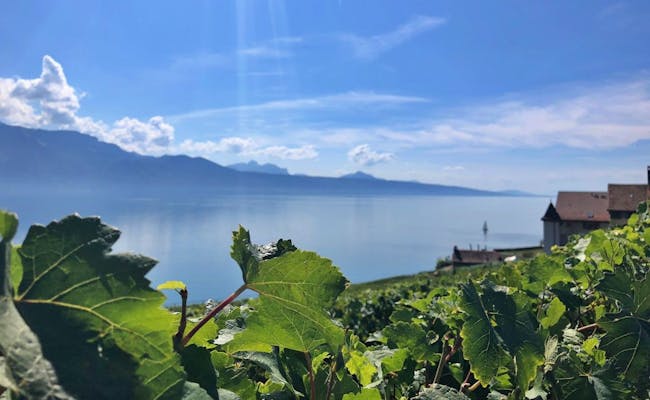 Wine terraces on Lake Geneva (Photo: Seraina Zellweger)
Wine terraces on Lake Geneva (Photo: Seraina Zellweger)Lake Constance covers an area of 473 km² and is often called the "Swabian Sea." It is the second largest lake in Switzerland in terms of surface area, although that’s not entirely accurate. Like Lake Geneva, it extends beyond the Swiss border. We share Lake Constance with our neighbors Austria and Germany, of which about a third of the lake "belongs" to us.
With a wealth of cycling and hiking paths, waterfront promenades, and beach resorts, Lake Constance is very accessible. It’s a popular destination for both loungers and active sports enthusiasts.
Additionally, various shipping companies operate on Lake Constance—both within Switzerland and to Germany and Austria. The fastest and most direct connection across the lake is the ferry between Romanshorn and Friedrichshafen.
In total, there are 16 islands on Lake Constance. Among the most well-known are the German town of Lindau, the flower island Mainau, and Reichenau Island.
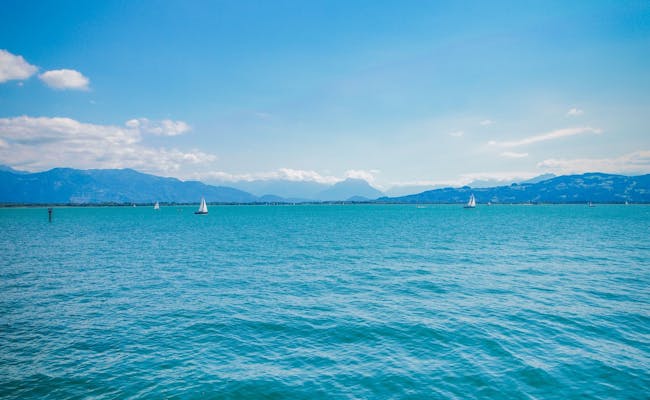
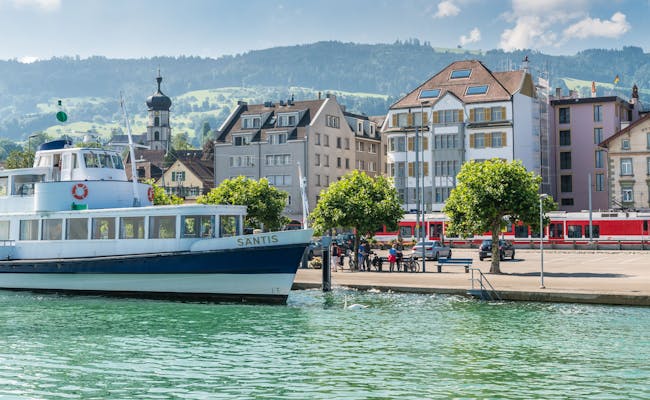 Boat on Lake Constance (Photo: St. Gallen Lake Constance Tourism)
Boat on Lake Constance (Photo: St. Gallen Lake Constance Tourism)Let's finally talk about the largest lake that is entirely counted as a Swiss lake. Lake Neuchâtel covers an area of 218 km² and, like Lake Geneva, is located in the French-speaking part of Switzerland. Together with its neighbors, Lake Biel and Lake Murten, it forms the Three-Lake Region.
This lake is another paradise for day trips. Whether by bike, on foot, by boat, or using public transport, the cities of Neuchâtel, Yverdon-les-Bains, and Estavayer-le-Lac – as well as several towns in between – are all easily accessible.
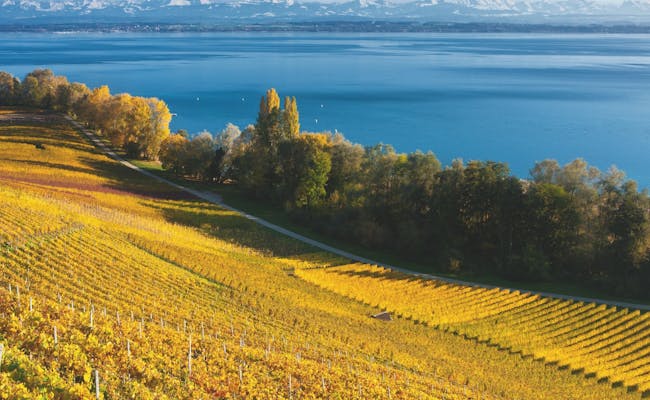 Lake Neuchâtel (Switzerland Tourism Andreas Gerth)
Lake Neuchâtel (Switzerland Tourism Andreas Gerth) Lake Neuchâtel (Switzerland Tourism Rob Lewis)
Lake Neuchâtel (Switzerland Tourism Rob Lewis)Hardly any lake in Switzerland has such a peculiar shape as Lake Lucerne. Its area is 133 km², which is just 23% of Lake Geneva. However, its perimeter is 75% of Lake Geneva, which definitely speaks for a winding lake.
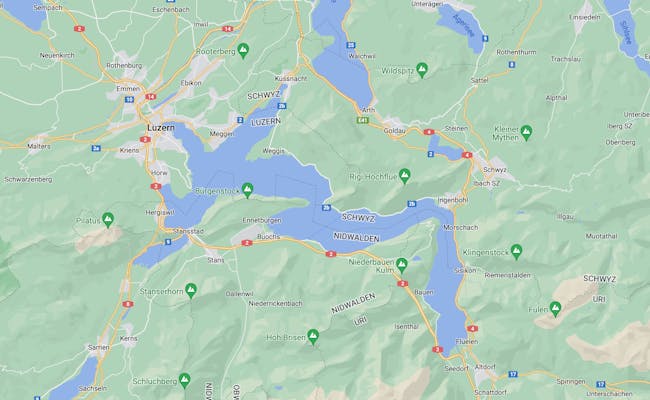 The winding Lake Lucerne (Map: GoogleMaps)
The winding Lake Lucerne (Map: GoogleMaps)The Lake Lucerne is a major highlight for tourists. On one hand, the city of Lucerne, which is extremely popular with visitors, is located right by the lake. On the other hand, you’ll find the three mountain peaks Pilatus, Rigi, and Stanserhorn in close proximity to Lake Lucerne.
Especially beautiful are the many steamboats and passenger ships that cruise across the lake year-round. Lake Lucerne is also an ideal area to combine hiking, funicular rides, cultural visits, and boat trips all in one region.
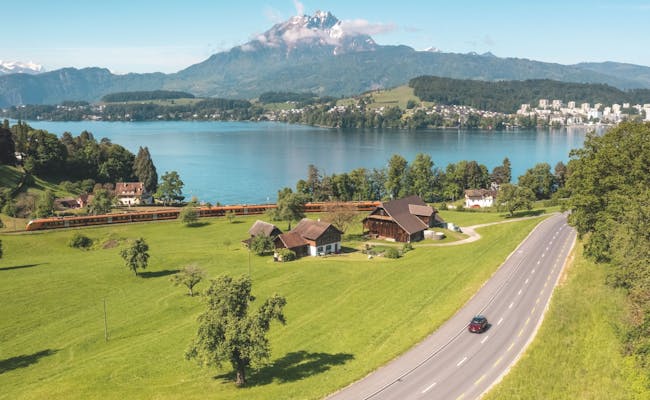 Lake Lucerne with Pilatus (Photo: Switzerland Tourism Andre Meier)
Lake Lucerne with Pilatus (Photo: Switzerland Tourism Andre Meier)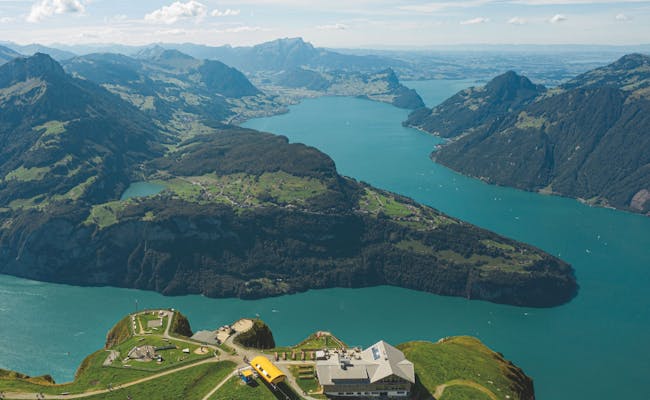 View of Lake Lucerne (Photo: Switzerland Tourism Daniel Conrad Loosli)
View of Lake Lucerne (Photo: Switzerland Tourism Daniel Conrad Loosli)If you're planning a trip to Zurich, your journey will most likely lead you to the bustling shores of Lake Zurich sooner or later.
At 88 km², it's the fifth-largest lake in Switzerland, and its elongated, narrow shape somewhat resembles a banana. Lake Zurich is divided into the Upper Lake and the Lower Lake, separated by the dam between Rapperswil and Pfäffikon, with two passages available for ships.
There are four islands on Lake Zurich. Passenger ships operate year-round between Schmerikon and Zurich. In total, over 30 docking points are served, including the island of Ufnau.
Since the Zurich agglomeration is the largest urban area in Switzerland, you might not find the peace and quiet you hoped for by the lake. Nevertheless, the publicly accessible shores invite you to linger. And a cozy picnic at Bellevue in Zurich is definitely something you shouldn't miss.
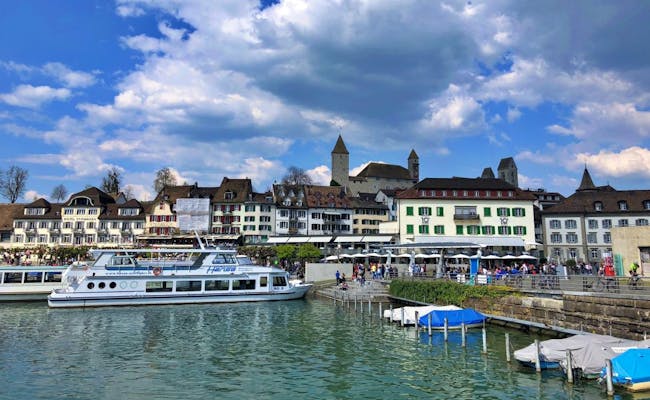 Rapperswil on Lake Zurich (Photo: Seraina Zellweger)
Rapperswil on Lake Zurich (Photo: Seraina Zellweger)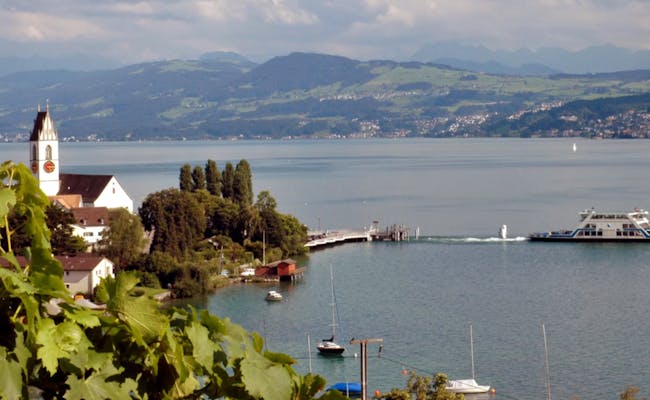 Lake Zurich (Photo: MySwitzerland)
Lake Zurich (Photo: MySwitzerland)Lake Thun is one of those lakes that knows how to show off its photogenic spots. Much of its charm comes from its advantageous location surrounded by mountains. This nearly 50 km² lake is nestled between majestic mountains, green alpine meadows, and charming villages. Thun is on one side, while Interlaken lies on the other.
By the way, Lake Thun is one of the two reasons why Interlaken is called "Interlaken", meaning "between the lakes." You’ll learn about the second reason later.
The boat trip between Thun and Interlaken offers particularly breathtaking views. It takes about two hours and is definitely worth the journey. Various towns along the way invite you to stop and take a break. Even if you do the whole trip in one go, you'll be too busy marveling and taking photos to feel bored.
The southern shore of Lake Thun is easier to access than the northern one. Hiking and biking paths run closer to the water along the southern shore, while the northern side is cluttered with the busy lakeside road. However, you can still cycle around it, which takes about 3-4 hours.
Aside from the usual water sports like water skiing or wakeboarding, sailing on Lake Thun is incredibly popular. On a beautiful summer day, you can see sailing students out on their boats, gliding along almost as perfectly lined up as a family of ducks…
 Thun Lake (Photo: Seraina Zellweger)
Thun Lake (Photo: Seraina Zellweger)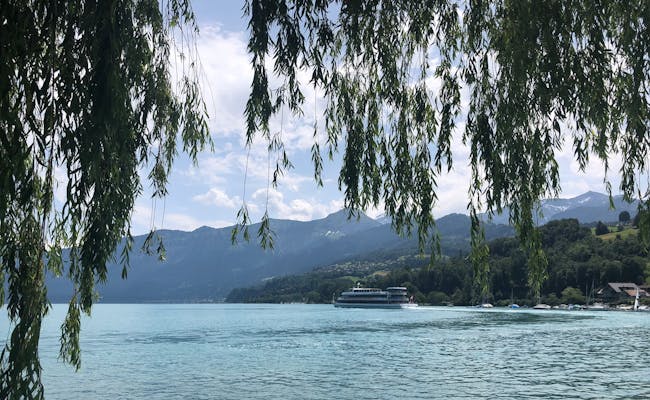 Lake Thun (Photo: Seraina Zellweger)
Lake Thun (Photo: Seraina Zellweger)Next, we're heading into Italian Switzerland, to Ticino. Lago Maggiore is only one-fifth located on Swiss territory and covers a total area of 212 km². So, the part in Switzerland is about 42 km².
Although it is mainly situated in Italy, the lake is a huge draw for people from Ticino. It's also popular among visitors from all over Switzerland.
Particularly, the towns of Locarno and Ascona offer a high quality of life and attract crowds. Since Ticino has a much milder climate than the rest of Switzerland, Lago Maggiore is already a pleasant swimming destination in early summer.
The Brissago Islands – two heavily wooded natural paradises in Lago Maggiore – can be reached by boat from Porto Ronco. Or, with a bit of stamina and strong legs, even by pedal boat.
According to an agreement, Italy is responsible for passenger transport on Lago Maggiore. Ships from the Navigazione del Lago Maggiore company operate across the entire lake.
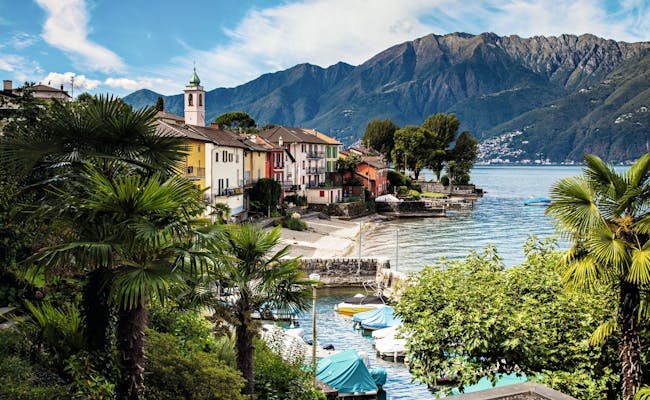 Ascona on Lake Maggiore (Photo: Switzerland Tourism Jan Geerk)
Ascona on Lake Maggiore (Photo: Switzerland Tourism Jan Geerk) Lake Maggiore (Photo: Switzerland Tourism Christof Sonderegger)
Lake Maggiore (Photo: Switzerland Tourism Christof Sonderegger)With a size of 40 km², Lake Biel in the Three-Lakes Region is the eighth largest lake in Switzerland. Particularly idyllic are the vineyards on its northern shore and St. Peter's Island. Strictly speaking, this island is not an island (anymore), but a peninsula that juts out about 5 km into Lake Biel
The car-free nature reserve on St. Peter's Island is perfect for an excursion by boat, by bike or on foot. On a forest nature trail you will learn everything about the local flora and fauna on various information boards. You will also have the opportunity to visit the Rousseau monument at the Südländte or even the room of the famous Jean-Jacques Rousseau
Passenger ships of the Lake Biel Navigation Company operate on Lake Biel. But also on your own with a SUP, a kayak or a rowing boat, the lake can be perfectly explored. Especially beautiful is a circumnavigation of the lake by bike. The route is 43 km long and takes just under 4 hours.
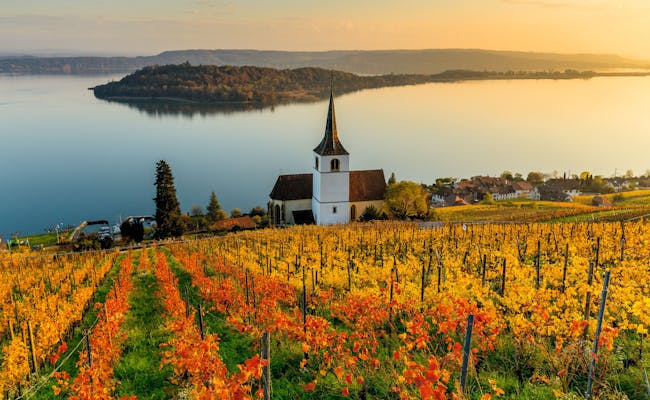 Vineyards at Lake Biel (Photo: Switzerland Tourism Jan Geerk)
Vineyards at Lake Biel (Photo: Switzerland Tourism Jan Geerk)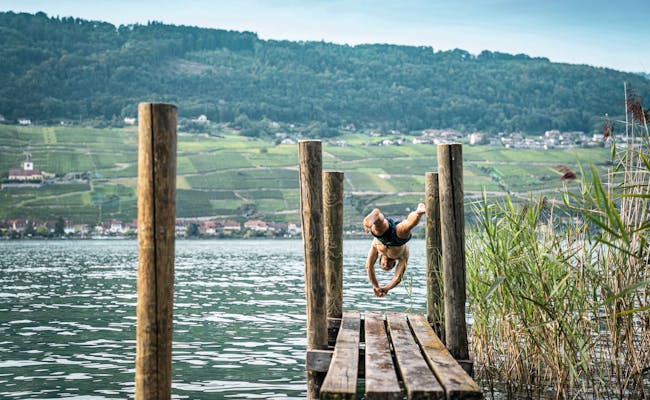 Steg on Lake Biel (Photo: Switzerland Tourism)
Steg on Lake Biel (Photo: Switzerland Tourism)The Zugersee has an area of 34.8 km² and is located in front of the town of Zug. The Zugersee is known for its idyllic sunsets. So if you’re lucky enough to be by the lake on an evening, find a quiet jetty and enjoy the last rays of sunshine of the day.
The region around Zug is also famous for its many cherry and chestnut trees. A "Chriesiwanderung" in the spring, when the trees are blooming, is almost a must. A particularly beautiful path leads from Zug to Oberwil and back.
If you’re a hopeless cherry blossom fan, you can hike along the entire lake from Zug to Goldau. This trail is also a gorgeous, approximately 5-hour excursion with views of the lake, even outside of the blooming season.
You can also let loose on and in the Zugersee. On one hand, in the summer, the Zugersee ferry operates. It takes you from Zug to the other end of the lake in about an hour to Goldau. On the other hand, there are 13 beach resorts and swimming spots where you can take a dip and enjoy a relaxing day at the beach.
 Zugersee (Photo: Switzerland Tourism Andre Meier)
Zugersee (Photo: Switzerland Tourism Andre Meier)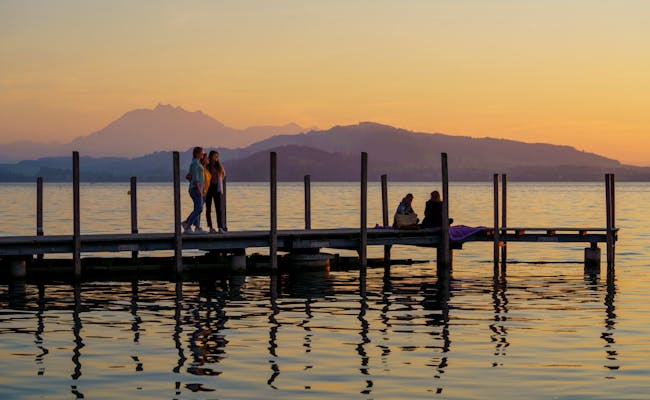 Evening atmosphere at Lake Zug (Photo: Switzerland Tourism Andre Meier)
Evening atmosphere at Lake Zug (Photo: Switzerland Tourism Andre Meier)Like Lake Maggiore, Lago di Lugano is located in Switzerland and Italy. The total area of the lake is 48.7 km², of which 30 km² belongs to Switzerland. Thanks to the very mild climate influenced by the Mediterranean, you can find palm trees and citrus fruits growing here.
While other lakes in Switzerland are still too cold for swimming in spring, the bathing season here starts much earlier. There are plenty of beaches and swimming areas along the shores of Lago di Lugano, allowing you to enjoy the lake almost year-round.
Popular destinations in the region that offer breathtaking views of the lake include Monte Generoso, Monte San Salvatore, and Monte Brè.
If you're traveling by boat, you'll discover the diverse beauty around Lago di Lugano. One of the most well-known family attractions is Swissminiatur in Melide, right next to Lugano. In this miniature world, you can see Switzerland represented and marvel at the Matterhorn and Lake Constance in just a few minutes.
 Cassarate River Mouth (Photo: Ticino Turismo Loreta Daulte)
Cassarate River Mouth (Photo: Ticino Turismo Loreta Daulte)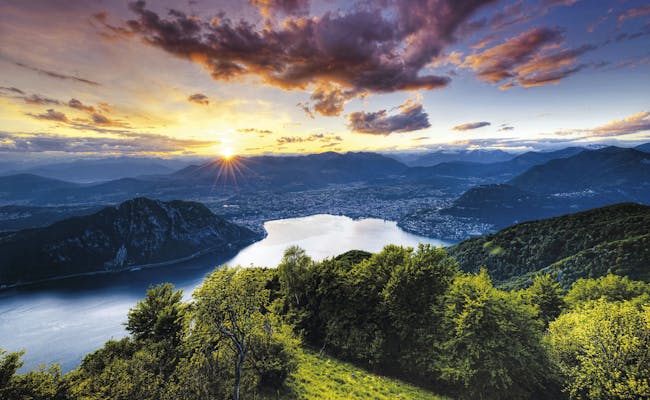 Lake Lugano (Photo: Ticino Turismo Enrico Boggia)
Lake Lugano (Photo: Ticino Turismo Enrico Boggia)Lake Brienz is the cold, turquoise cousin of Lake Thun and the second reason for the name of Interlaken. It is fed by the fresh waters of the Aare and the surrounding mountains, making it noticeably colder than Lake Thun.
If you decide to take a dip in one of the cleanest lakes in Switzerland, be prepared for some serious goosebumps in this 30 km² body of water—even in summer.
You can also enjoy a boat ride on Lake Brienz, which takes about 1 hour and 25 minutes between Interlaken and Brienz. A highlight along the way is a stop at the pier of the Grand Hotel Giessbach. If you have the time, we recommend a quick detour to Hotel Giessbach with its beautiful waterfalls.
There’s no shortage of water activities on Lake Brienz either. From kayak tours to jet boating and rowing, you’ve got a wide range of activities to choose from.
 Lake Brienz near the Grand Hotel Giessbach (Photo: Seraina Zellweger)
Lake Brienz near the Grand Hotel Giessbach (Photo: Seraina Zellweger)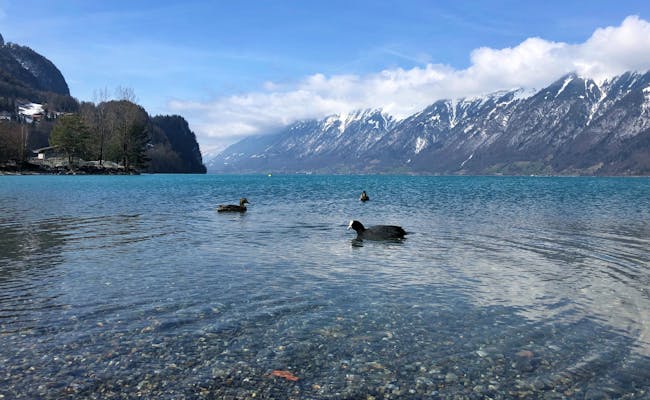 Lake Brienz in Winter (Photo: Seraina Zellweger)
Lake Brienz in Winter (Photo: Seraina Zellweger)The Walensee is a true gem in Eastern Switzerland, surrounded by steep cliffs. It borders the Churfirsten mountain range in Toggenburg to the south, covering an area of 24 km². Its fjord-like features make the lake resemble a Scottish loch, especially during stormy or gloomy weather.
To the east of the lake is the charming Schnittlauchinsel (Chives Island). It gets its name from the strong scent that prevails there. Although the Schnittlauchinsel is quite small and can even be flooded depending on the water level, it’s still worth a visit. You'll need your own boat or kayak to get there outside of the bird breeding season.
For the best view of the Walensee, you should head up high. A hike on the Churfirsten or on the Flumserberg is perfect for capturing stunning photos of the turquoise lake, which changes color depending on the sunlight.
Passenger boats operate on the Walensee all year round, although the winter schedule is significantly reduced. Interestingly, there are three municipalities on the northern shore of the lake that can only be reached by boat, as there are no roads leading to them. When you're there and take a look at the Walensee's topography, you'll see why that is.
 Chive Island on Lake Walensee (Switzerland Tourism Roland Gerth)
Chive Island on Lake Walensee (Switzerland Tourism Roland Gerth) Walensee (Photo: Switzerland Tourism Ivo Scholz)
Walensee (Photo: Switzerland Tourism Ivo Scholz)Lake Murten, along with Lake Neuchâtel and Lake Biel, is the third candidate that lends its name to the region known as the Three Lakes District. Covering 22 km², it ranks as the 13th largest lake in Switzerland. You can easily cycle around it. The route is 28 km long and takes about 2 hours and 30 minutes.
A highlight at Lake Murten is the charming Zähringer town of Murten with its impressive city walls. You’ll also find the longest freshwater beach in Europe at this lovely lake. In Salavaux, there's a roughly 500 m long sandy beach that gently slopes into the water. It’s perfect for a family outing, as kids can stand for a while before it gets deep. Plus, thanks to its shallow depth, the lake warms up quickly to pleasant swimming temperatures, making it an ideal bathing spot.
In the summer, you can take a scenic boat tour from Murten every day. The trip takes about 1 hour and 15 minutes to circle the lake, offering you some of the most beautiful views in the region.
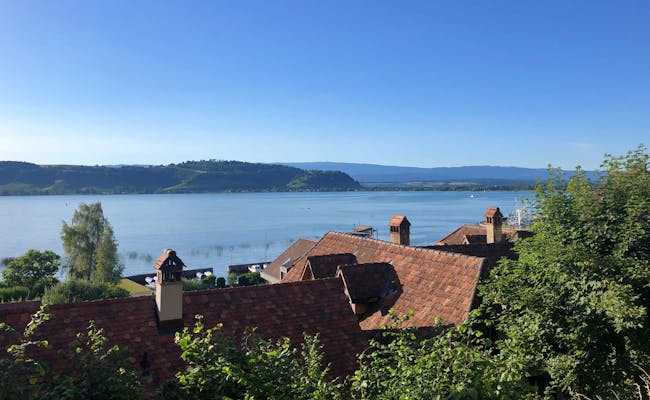 The town of Murten by Lake Murten (Photo: Seraina Zellweger)
The town of Murten by Lake Murten (Photo: Seraina Zellweger) Beach in Salavaux (Photo: Seraina Zellweger)
Beach in Salavaux (Photo: Seraina Zellweger)The list of Swiss lakes could be continued here almost ad infinitum. As I said, there are over 1500 lakes in Switzerland. Now you know some of the most important ones and what to expect. If you are looking for more information about the other 1487 lakes, we recommend the Website of Lake Switzerland. Otherwise we wish you a lot of fun in the water castle of Europe.